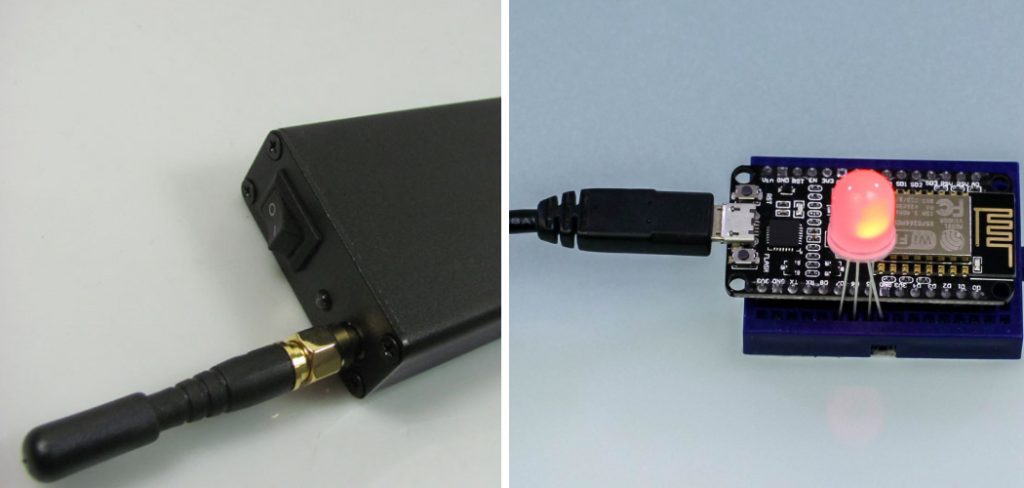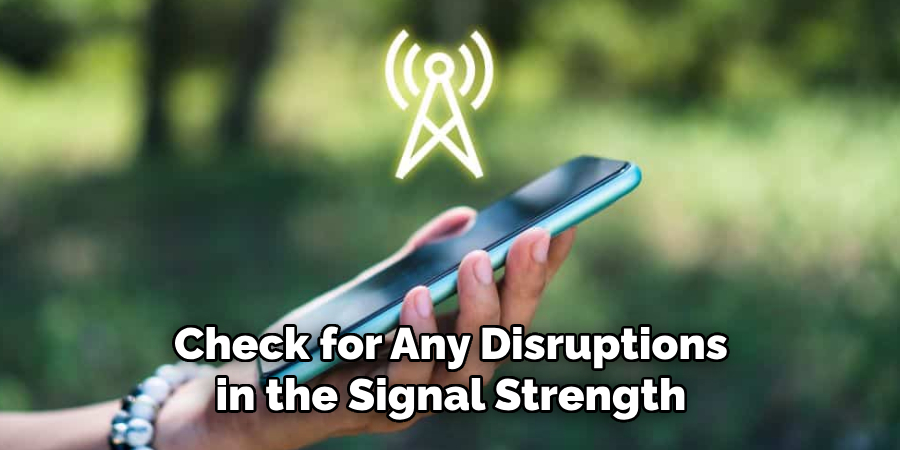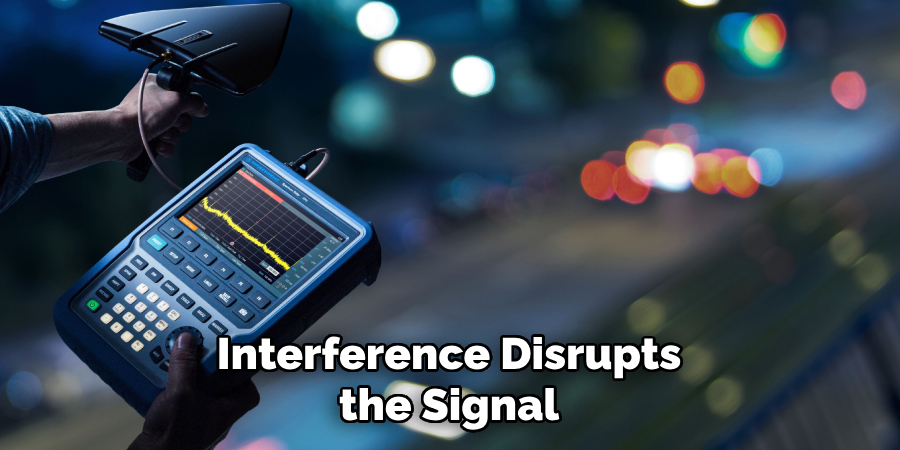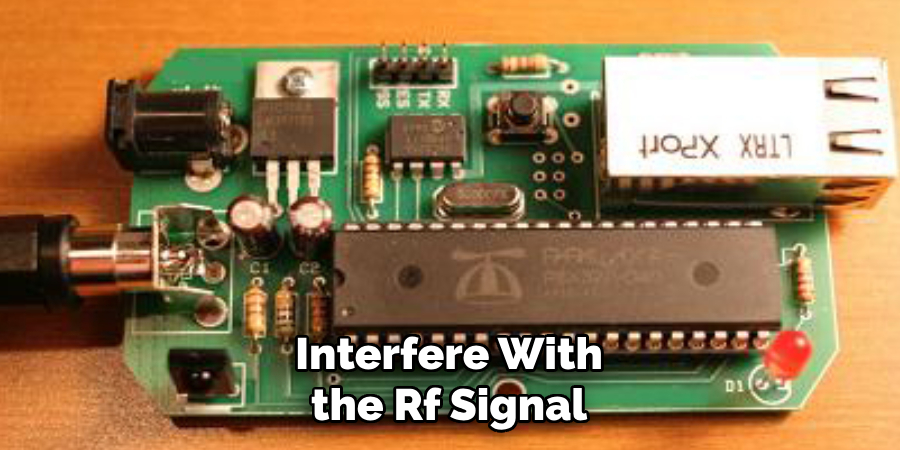There are many reasons why someone might want to learn how to detect a camera jammer. Whether you’re concerned about your privacy, security, or just curious about the technology behind it, understanding how to detect a camera jammer can be useful in various situations.

One of the main reasons for learning how to detect a camera jammer is for personal privacy and security. With the advancement of technology, it has become easier for individuals to set up hidden cameras in public places and private spaces without consent.
The main advantage of knowing how to detect a camera jammer is the ability to protect your privacy and security. By being able to identify when a camera jammer is in use, you can take necessary precautions to safeguard your personal information and prevent any potential surveillance. Read this blog post to learn how to detect a camera jammer.
Step-by-step Instructions for How to Detect a Camera Jammer
Step 1: Inspect the Area
The first step in detecting a camera jammer is to inspect the area. Look for any suspicious or out of place objects that may indicate the presence of a jamming device. These devices can come in various forms, such as small boxes, USB drives, or even smartphone apps.
Step 2: Check for Signal Interference
One of the telltale signs of a camera jammer is signal interference. Use your smartphone or any other wireless device to check for any disruptions in the signal strength. If you notice significant drops, it could be a sign that there is a jamming device nearby.

In addition to checking for signal interference, look around the area for hidden cameras. These devices are often used in conjunction with jammers to block the signals and prevent detection. Look for any small lenses or unusual objects that may be hiding a camera.
Step 3: Use an RF Detector
An RF (radio frequency) detector is a device specifically designed to detect radio signals, which are often used by camera jammers. These detectors can help you pinpoint the exact location of the jammer by providing signal strength readings.
A thermal camera can also be used to detect camera jammers. These devices work by detecting heat signatures, so any abnormal heat sources in the area could indicate the presence of a jammer.
Step 4: Look for Physical Signs
In some cases, you may find physical signs that a camera jammer is present. These can include wires, antennas, or power sources that are not typically found in the area. If you notice any of these signs, it’s likely there is a jammer nearby.
If you have a wireless security system in place, monitor your Wi-Fi network for any unusual activities. Camera jammers can sometimes interfere with wireless security cameras, causing them to disconnect or drop signal.
Step 5: Check for Discrepancies in Video Footage
If you have access to the video footage from your security cameras, look for any discrepancies or abnormalities. Jamming devices can sometimes cause distortions or disruptions in the video feed. A frequency analyzer is another specialized device that can help detect camera jammers. These devices scan for frequencies in the area and can identify any unusual or unauthorized signals.
Step 6: Seek Professional Assistance
If you are unable to detect a camera jammer on your own, it’s best to seek professional assistance. Security experts have advanced tools and techniques to identify and eliminate jammers, ensuring the safety and security of your property. Remember to always seek permission before scanning for jammers in any public or private spaces.
By following these step-by-step instructions, you can effectively detect a camera jammer and protect yourself from potential privacy violations. Stay vigilant and be aware of your surroundings, as even the most sophisticated jammers can be detected with the right tools and knowledge.
Precautions for How to Detect a Camera Jammer
- Be cautious when using your smartphone or any wireless devices in public spaces. These devices can be targeted by jammers, compromising your personal information.
- Regularly check for updates and security patches on your wireless devices to prevent them from being vulnerable to jamming attacks.
- If you suspect a camera jammer is present, do not confront the individual or try to remove the device yourself. Seek professional help instead.
- Be aware of any suspicious behavior or individuals in areas where privacy is expected, such as hotel rooms, changing rooms, or public bathrooms.
- Keep an eye out for any unusual objects or devices when entering a new space. Trust your instincts and report anything that seems out of place.
- Educate yourself on the different types of jammers and their capabilities. This will help you better understand how to detect them and protect yourself.
- Consider using a privacy screen or cover for your laptop or smartphone to prevent unauthorized access through camera jammers.
By following these precautions, you can stay one step ahead of potential camera jammers and protect your privacy. Stay vigilant and proactive in safeguarding your personal information. Knowledge is power when it comes to detecting camera jammers.

What Are the Signs or Indications That a Hidden Camera is Being Jammed?
Some possible signs or indications that a hidden camera is being jammed include:
- Sudden drops in signal strength on your wireless devices, such as smartphones or laptops.
- Distortions or disruptions in video footage from security cameras.
- Unusual heat sources detected by a thermal camera in the area where the hidden camera is suspected to be.
- Physical signs of a jamming device, such as wires, antennas, or power sources that are not normally present in the area.
- Frequencies on an RF detector that do not match with the expected signals in the environment.
- Disruptions in Wi-Fi networks, particularly if there is a wireless security system in place.
- Indicators of signal interference on your smartphone or other wireless devices when performing a signal strength check.
If you notice any of these signs or indications, it is important to investigate further and take necessary precautions to protect your privacy. Remember to seek professional assistance if needed and always respect the privacy of others when scanning for jammers in public spaces. Stay informed and stay safe from potential camera jamming attacks.
What Are the Common Types of Camera Jammers and How Do They Work?
Camera jammers are a type of electronic device designed to disrupt or block the signal of surveillance cameras. They come in various forms, such as handheld, portable, and even fixed installations. These devices work by emitting radio signals on the same frequency used by the cameras, causing interference and rendering them useless.
There are two common types of camera jammers: analog and digital. Analog jammers work by emitting a burst of radio frequency (RF) noise on the same frequency used by analog cameras.
This interference disrupts the signal, making it difficult for the camera to capture clear images or videos. Digital jammers, on the other hand, target digital cameras and use more complex techniques to interfere with their signals.

What Are the Potential Risks of Using a Camera Jammer and How Can They Be Avoided?
Camera jammers have become increasingly popular in recent years due to their ability to block cameras from recording or transmitting images. While these devices may seem harmless and even necessary for privacy purposes, they can actually pose a number of risks. In this section, we will discuss the potential risks of using a camera jammer and explore ways to avoid them.
One of the main risks associated with using a camera jammer is the violation of privacy laws. In most countries, it is illegal to intentionally block or interfere with a surveillance camera’s functionality.
This means that if you are caught using a camera jammer, you could face legal consequences such as fines or even jail time. It is important to research and understand the laws in your area before considering using a camera jammer. Another risk of using a camera jammer is the potential for interference with other electronic devices.
These jammers emit strong signals that can disrupt not only cameras, but also Wi-Fi networks, cell phone signals, and even emergency communication systems. This could potentially put others in danger if they are unable to call for help during an emergency situation.
Are There Any Techniques or Methods to Detect a Hidden Camera in the Presence of a Jammer?
There are a variety of techniques and methods that can be used to detect hidden cameras, even in the presence of a jammer. These include physical inspections, radio frequency (RF) scanning, thermal imaging, and using specialized detection devices.
Physical inspections involve visually searching for any suspicious objects or unusual wiring in a room. This method may not be effective if the hidden camera is well-concealed or disguised as a common object.
RF scanning, on the other hand, uses specialized equipment to detect signals emitted by wireless cameras. However, if a jammer is present, it can interfere with the RF signal and make it difficult to accurately pinpoint the location of the hidden camera.

Thermal imaging is another effective method for detecting hidden cameras. By using an infrared camera, it can detect heat signatures from electronic devices, including hidden cameras. This method can be useful in identifying any abnormal energy consumption in a room.
Conclusion
In conclusion, detecting a camera jammer is essential in ensuring your privacy and security. These devices have become increasingly common, and it is important to know how to identify them.
A camera jammer works by emitting a signal that interferes with the frequency of cameras, rendering them useless. However, there are some telltale signs that can help you detect a camera jammer.
Firstly, keep an eye out for any unusual power cables or wires connected to the area where you suspect a camera jammer may be present. These devices require a power source, so any suspicious wiring could indicate its presence. Secondly, look out for any sudden disruptions in your wireless signal.
Camera jammers also interfere with Wi-Fi and Bluetooth signals, so if you experience unexpected drops in signal strength, it could be a sign that someone is using a camera jammer nearby. I hope reading this post has helped you learn how to detect a camera jammer. Make sure the safety precautions are carried out in the order listed.
About
Safety Fic is a distinguished figure in the world of Diy design, with a decade of expertise creating innovative and sustainable Diy solutions. His professional focus lies in merging traditional craftsmanship with modern manufacturing techniques, fostering designs that are both practical and environmentally conscious. As the author of diy, Safety Fic delves into the art and science of Safety Fic-making, inspiring artisans and industry professionals alike.
Education RMIT University
(Melbourne, Australia) Associate Degree in Design (Safety Fic) Focus on sustainable design, industry-driven projects, and practical craftsmanship. Gained hands-on experience with traditional and digital manufacturing tools, such as CAD and CNC software.
Nottingham Trent University
(United Kingdom) Bachelor’s in diyfastly.com and Product Design (Honors) Specialized in product design with a focus on blending creativity with production techniques. Participated in industry projects, working with companies like John Lewis and Vitsoe to gain real-world insights.
Publications and Impact
In diy, Safety Fic his insights on indoor design processes, materials, and strategies for efficient production. His writing bridges the gap between artisan knowledge and modern industry needs, making it a must-read for both budding designers and seasoned professionals.
